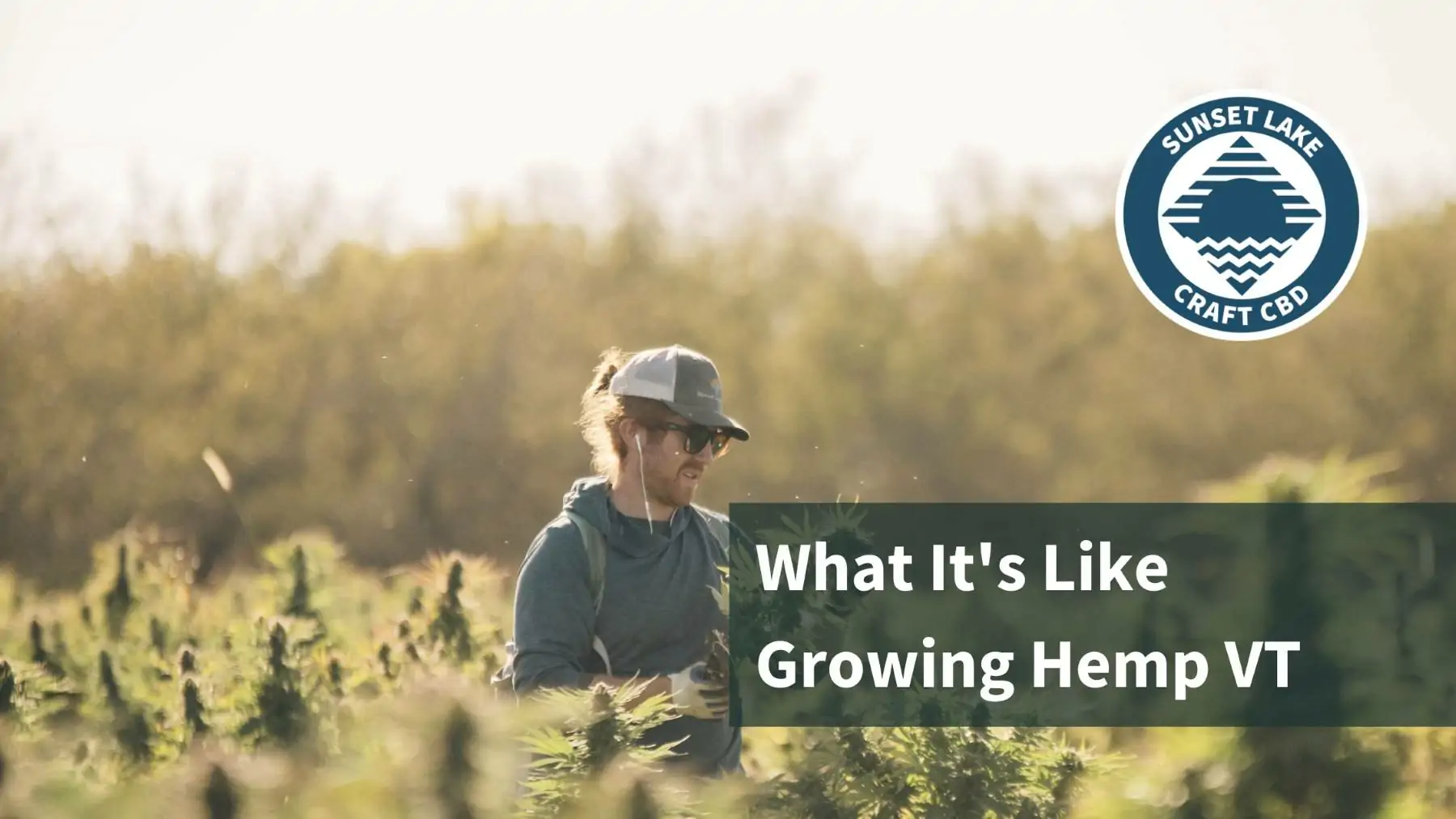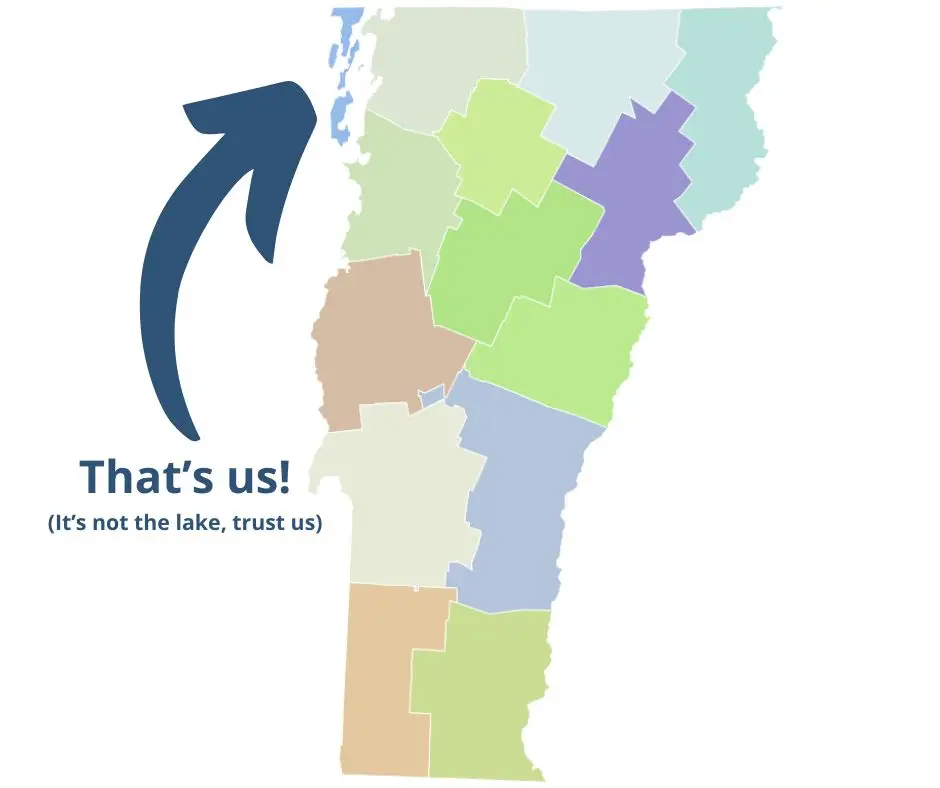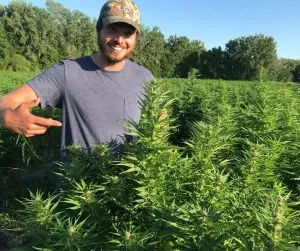What It’s Like Growing Hemp In Vermont

I am sitting in front of, just outside the milking parlor and farm office, on a dusty cobweb-covered bench. As I write our first blog post the farm puppy, Nicky, is sitting on my lap begging to be pet. She is a slice of respite from farm chores and brings us all smiles during the long fall days. It is harvest time after a long season’s worth of hard work finally coming to bear. After several long months, it is time to reap what we have sown.

It All Starts In Vermont
Sunset Lake CBD is in Alburgh, VT. The Alburgh tongue, the proper geographic feature, is akin to a peninsula that protrudes south from Quebec into the northern waters of Lake Champlain. To our east is the Missisquoi Bay, and on clear days, one may see Jay Peak in the distance. On the west, towards the sunset, are the headwaters of the Saint Richelieu River. One could canoe from the farm to Montreal and even the ocean under the right circumstances. Easier than that, a short drive north would bring text messages from Canadian cell service providers describing the new roaming coverage rates.
As we endeavor on our first hemp harvest there are many items to reflect upon from a year of growing hemp in Vermont, both for the plants and ourselves. The whole process started in early April with the construction of a greenhouse. It was purchased from an organic vegetable farmer in upstate New York. The team had to deconstruct the greenhouse onsite, carefully strap it to a flatbed trailer, and drive it up to Alburgh for reassembly. The simple steel, wooden, and plastic structure is over 100’ long and 25’ wide. The plastic is torn and repaired with duct tape in innumerable spots but ultimately did the job. All of our 16,000 hemp plants were started from seed in the greenhouse. It was good for us.
From Seed
All plants are started from seed in the greenhouse. We used specialized hemp potting soil in four-inch and one-inch pots. We carefully placed every seed in the pots by hand like an assembly line. One person would walk down the greenhouse tables, poking half-inch holes in the moist soil like someone using an old typewriter. It is important to have the correct depth of soil for the seed to break through and begin life. Seeds were placed in the thimble-sized holes, gently covered with soil, and pressed upon. After several days of daily watering and maintaining warm and dry air temperatures, the seeds broke through their temporary earthly graves and sprouted up, reaching toward the sun. Germination rates were amazing, and we all exhaled a sigh of relief the first day we saw hundreds of tiny green sprouts in their pots. The plants never looked back.
While they sat in the greenhouse, we prepped the fields for transplanting. This is a labor-intensive process with several steps. First is roto-tilling the field several times to mechanically loosen up and turn over the soil. This is in preparation for implementing our weed control and irrigation systems. It is the same system used in organic vegetable farms that lays drip irrigation tubing underneath black weed-barrier plastic. This lets us efficiently water the plants in the field as well as using absolutely zero herbicides for weed control. Picture the red and white of an American flag where the wheel tracks are white and the black plastic is the red stripe. Our 12-acre field had dozens of these long black plastic rows, which could each accommodate hundreds of plants.
Transplanting
After several weeks of growth, we moved on to transplanting. A vegetable transplanter is a piece of equipment towed behind a small tractor. There are several key components. First, and most visual, is a 100-gallon translucent yellow water tank that sits perched on top of the metal frame. Underneath the tank are tubes running into a hollow spoked water wheel. This item is towed over the black plastic rows and the water flows from the tank, into the wheel as the spokes of the wheel puncture the black plastic. There are two small seats attached to the back of the transplanter where the farmers sit and place the plants into these freshly poked holes. Our first plants went in on June 8, and we barely finished at 10 pm on June 30th.
June, July, and August were great months of vegetative growth for our ladies. Amazing soil, plenty of sunshine, and adequate irrigation and we have some monster plants. The three-foot spacing we had for some of our earlier plants turned out to be insufficient in some places. We anticipated four-foot, one-pound plants with some breathing room for light and airflow in between them. We ended up with five-foot (and taller) several-pound plants that are more like a wind-breaking hedge row than a hemp piece. However, with painstaking pruning and weed whacking we made the best of the situation and they continued to thrive.

To Product
There are two main products that come off of the farm. First is our trimmed flower, this product only comes from the fullest and most mature parts of our hemp colas. These buds have the highest CBD content, terpene profile, and flavor. The best plants are carefully selected by our hemp specialists. The CBD biomass is what is dried and processed to add to other products. While there are several methods for extraction the most common is a cold ethanol bath extraction. Using our local processing partners, we can create a high CBD crude oil. Roughly 1000 pounds of biomass will yield 10 gallons of this crude. We like to think of it as similar to the maple sap to maple sugar process! Another high-quality product from Vermont farmers.
We feel grateful for the position we find ourselves in. Farming like any other entrepreneurial activity brings long days and big risks. Simply the fact we sit on an enormous crop of hemp is cause for celebration. Only half of the battle is over. It is essential to cross the finish line with efficiency and high standards for a well-priced and premium Vermont hemp product. Growing hemp in Vermont has proven to be a unique challenge, but we wouldn’t want it any other way.
Read more: Where should you buy Vermont CBD?
